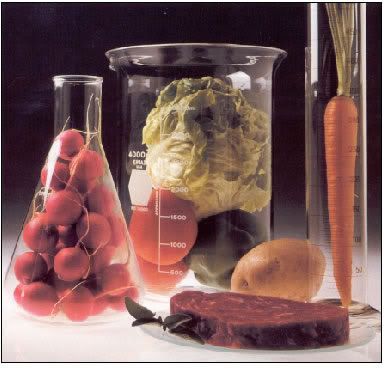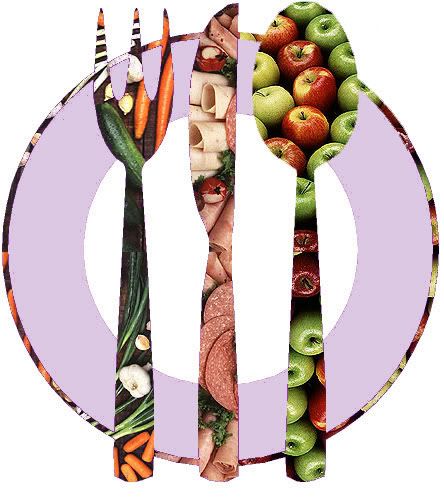Dairy, calcium, and vitamin D intakes and prostate cancer risk.
Both ecologic and epidemiologic studies have fairly consistently found an increase in prostate cancer risk with intake of dairy foods. A strong ecologic correlation between milk intake and prostate cancer mortality was noted as early as 1975, and in a more recent ecologic analysis, the correlation was stronger for milk and prostate cancer mortality than for any other dietary factor, including red meat. Among epidemiologic studies, 7 of 10 prospective studies found a positive association between dairy intake and prostate cancer risk. Studies that examined individual types of dairy products show more consistent findings for milk, probably because milk is the most commonly consumed form of dairy. Although initial explanations for the observed dairy effect related to the fat content in dairy foods, the hypothesis that 1,25-dihydroxyvitamin D (1,25-D) might protect against prostate cancer suggests another possible mechanism: that at sufficiently high amounts, dietary calcium suppresses production of 1,25-D, thereby increasing risk of prostate cancer.
The observation that dairy may increase risk of prostate cancer is troubling, given current dietary recommendations for calcium intake, aggressive promoting of dairy as a source of calcium, and the possibility that calcium intake may protect against colon cancer. The objective of this analysis was to examine the associations of dairy food, calcium, and vitamin D intake with prostate cancer risk, to determine whether previous findings can be confirmed, and to assess the extent to which associations observed for dairy might be due to their calcium content, possibly through a vitamin D-related pathway.
DISCUSSION
Our findings are consistent with most studies that observed an elevated risk of prostate cancer with greater dairy or milk intake and with several but not all studies that observed an elevated risk with greater calcium intake. Our risk estimates for dairy and calcium are higher than some previously reported estimates but comparable to those from the Health Professionals Follow-Up Study and from a case-control study in King County, WA. In the Health Professionals cohort, RR estimates for advanced prostate cancer were 1.6 for more than 2 compared with 0 glasses milk/d, and 1.6 for 1000 compared with less than 600 mg Ca from food/d. In the King County, WA, study, odds ratio estimates for regional or distant disease were 2.1 for 2 compared with less than 2 glasses milk/wk, and 1.6 for 838 compared with less than 564 mg Ca from food/d. Effect estimates for calcium from food were more pronounced than for supplemental calcium in 2 of 3 studies.
Notably, several previous studies that included larger proportions of cases diagnosed after the widespread adoption of PSA for screening saw stronger associations with calcium for more advanced disease than for the early, preclinical disease often detected by PSA screening. A distinct advantage of the current study is that most of the cases were diagnosed before more widespread PSA screening began in 1991. Cases were, thus, less likely to be diagnosed incidentally and more likely to be advanced and clinically apparent, which allowed for a clearer examination of dairy and calcium intake in relation to clinically relevant disease.
Dairy foods may increase prostate cancer risk by raising circulating concentrations of insulin-like growth factor I, but such a mechanism would not explain why we observed an association for low-fat milk only. Alternatively, calcium in dairy may increase risk by suppressing concentrations of circulating 1,25-D. Possibly, this mechanism is more applicable to low-fat milk than to other calcium sources. In the United States, milk is likely the most important source of bioavailable calcium because of its frequency of consumption and the ready absorption of calcium, especially in the presence of vitamin D added in fortification. Whereas the suppressive effects of calcium from whole milk may be countered by high intake of vitamin D, a similar reversal of calcium's effects may not occur with low-fat milk because fat-reduced milk products tend to have a lower vitamin D content. Vitamin D, a fat-soluble vitamin, may also be less well absorbed from fat-reduced milk. Although a recent study found similar levels of absorption of vitamin D added to skim and whole milk, the quantity used in the study was 25 000 IU in 240 mL milk, substantially above the recommended amount of fortification in the United States of 400 IU/qt.
In fact, we found risk was elevated only for low-fat milk and not for whole milk or any other dairy food. When we examined calcium from different food sources, we saw no association for calcium from any source other than low-fat milk. We also saw no association for calcium supplements, although we were able to identify only 151 men who reported such use. In the Physicians' Health Study as well, the elevated risk of prostate cancer associated with dairy and calcium intake was attributable primarily to intake of skim milk, and calcium intake from skim milk showed a stronger inverse correlation with plasma 1,25-D concentrations than did total dairy calcium. Although low-fat milk consumption may be recalled with less error than the consumption of other dairy products, it is unlikely that reporting would be so different between low-fat and whole milk, for example, as to result in complete attenuation of the association for whole milk. Our findings suggest, therefore, an effect attributable primarily to the consumption of low-fat milk, but whether because of its calcium content and vitamin D availability or to another characteristic of low-fat milk is not known. Removal of fat from milk, for example, may remove other components with potentially cancer-protective properties, such as conjugated linoleic acid.
Because men of higher socioeconomic status were more likely to drink low-fat milk, detection bias is another possibility. Since 1986, when the US Food and Drug Administration approved the PSA test for monitoring prostate cancer progression and prostate cancer screening, incidence has increased more steeply in men of higher socioeconomic status, who have better awareness of or access to screening modalities. Because PSA testing was relatively uncommon before 1991, cases in our sample were more likely to be advanced cases. RR estimates were also largely unchanged when we limited cases to the 107 diagnosed before 1991, when we more conservatively limited cases to the 46 identified before government approval of PSA testing in 1986, and when we controlled for sociodemographic factors that might be linked to screening such as education.
Some previous studies suggest a protective effect for phosphorus with adjustment for calcium. Phosphorous is found in a variety of food sources, although the principal contributors are milk, meat, poultry, and fish. Phosphorus has been hypothesized to reduce risk by increasing parathyroid hormone concentrations or reducing calcium bioavailability in the intestine, resulting in higher 1,25D concentrations. We saw no effect for phosphorus or evidence of an interaction between calcium and phosphorus.
Although vitamin D is the central factor in the hypothesized mechanism that links calcium to prostate cancer risk, previous studies have not shown a protective effect for dietary vitamin D. Some evidence links higher calcium intake with lower concentrations of circulating 1,25-D; other studies have noted a protective effect of fatty fish, a principal source of vitamin D. In our cohort, we observed a suggestive protective effect for vitamin D when we combined vitamin D from all dietary sources, analyzed in tertiles, and adjusted for calcium intake.
In additional analyses to reduce the potential for inaccurate estimates because of the high collinearity between calcium and vitamin D intake, however, vitamin D was no longer associated with risk, whereas the strong, positive association for calcium persisted. Further, even with adjustment for calcium intake, we observed no inverse association with risk of any single food or food group rich in vitamin D, including fish and seafood. Several factors contribute to the difficulty inherent in evaluating the effect of vitamin D effect on risk, including potential error in estimating vitamin D intake, the high collinearity between calcium and vitamin D intake, and the importance of both sunlight and diet in determining circulating vitamin D concentrations.
Sunlight has been hypothesized to protect against prostate cancer through 1,25-D production.
Sunlight has been hypothesized to protect against prostate cancer through 1,25-D production.
A more recent work also offers evidence that childhood and cumulative, lifetime sun exposure is associated with reduced risk. Of the variables related to sunlight exposure that we examined, only adherence to a southern dietary pattern as an adult, possibly reflecting extended exposure to sunlight through longtime residence in the South, was inversely associated with prostate cancer risk. We found no evidence, however, that it significantly modified the effects of dairy, calcium, or vitamin D intake on prostate cancer risk.
A primary limitation of the study is that the diet questionnaire used in the 1982–1984 interview was not validated for estimating nutrient intake. Our estimates of calcium and phosphorus intake, however, are similar to independently derived 24-h recall estimates from the USDA 1994 Continuing Survey of Food Intakes by Individuals ( calcium: 750 mg/d; phosphorus: 1307 mg/d for men aged 51–70 y), and our estimate of vitamin D intake is only slightly higher than an independent estimate, based on 24-h recall data, of 143–148 IU/d for women participating in the 1971–1975 baseline survey of the NHEFS. Moreover, with little evidence of systematic bias in estimates, measurement error should generally attenuate associations.
An additional limitation is that, because typical supplement dosage could not be readily estimated from available data, we only considered dietary sources in estimating calcium and vitamin D intake. The small number of men who reported taking calcium (n = 151) or fish oil (n = 50) supplements further limited our ability to evaluate the effect of nondietary sources of these nutrients on disease risk. Finally, our findings were based on only a relatively small number of cases.
As discussed above, an important strength of the study is that, with a follow-up that ended in 1992, cases were less likely to be diagnosed incidentally through PSA testing and more likely to be clinically apparent and advanced, thus allowing for a clearer examination of dietary intake in relation to clinically relevant disease. Other strengths of the NHEFS include its prospective design; relatively long follow-up; excellent ascertainment of cancer outcomes; ethnically, socioeconomically, and geographically diverse population; and detailed diet questionnaire.
In summary, we found that prostate cancer risk was significantly elevated with higher intake of dairy foods and calcium, particularly calcium from low-fat milk. Our findings suggest that dairy intake increases risk of prostate cancer, probably through its calcium content. Reasons for the elevated risk with low-fat milk are unclear, although the reduced content and bioavailability of vitamin D in low-fat milk may play a role. Although 1,25-D has been postulated to reduce risk of prostate cancer and calcium may increase risk by suppressing circulating concentrations of 1,25-D, we failed to see any direct evidence for a protective effect of vitamin D intake in our cohort. Calcium is thought to protect against osteoporosis and colon cancer, and dairy is the primary source of calcium in the US diet. Given the implications of our findings with respect to recommendations to increase both calcium intake and low-fat milk consumption, the mechanisms by which calcium and low-fat milk might increase prostate cancer risk should be clarified and confirmed to verify that calcium is indeed the critical risk factor.
Conclusions:
Dairy consumption may increase prostate cancer risk through a calcium-related pathway. Calcium and low-fat milk have been promoted to reduce risk of osteoporosis and colon cancer. Therefore, the mechanisms by which dairy and calcium might increase prostate cancer risk should be clarified and confirmed.




1 Comments:
Really interesting blog about 3 acid dha fatty omega. In a similar vain to 3 acid dha fatty omega, I've found the richest, purest omega-3 EFP fish oil supplement on the market. My health has improved dramatically - both physical and mental. I've been taking MorEPA now for about 6 months and I cannot emphasize how much this supplement have helped me to cope with anxiety and depression. The supplements can be ordered from **wwwomega3.com**. I'd also recommend daily exercise.
Post a Comment
<< Home